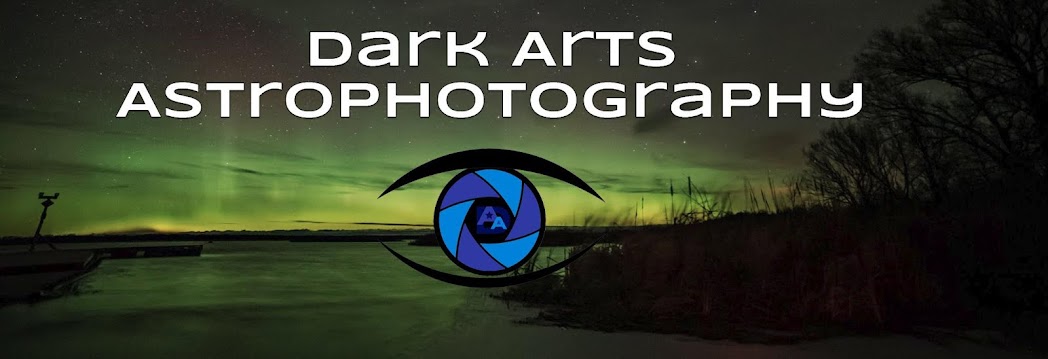 |
| LX90 mounted with tube rings |
And it worked great. The first couple of times I went out observing I concluded that I had make a great choice. However, I soon realized the error of my ways. For visual observation, this wasn't an issue. The tube was perfectly balanced. However, when it came to astrophotography with my DSLR, the weight of the camera on the back of the scope threw off the balance of the tube completely. And there was no way to move the tube forward in the rings to balance it. I still managed to take pics with it this way, and have been for a while, but I now know it's less than ideal. When I made my decision, I hadn't taken the balance issue into account. The accounts I read on other forums of people using tube rings were for visual observation, which was perfect. But for photography where a lot of stuff is usually attached to the telescope, this just wouldn't do.
Now that I've started using my LX90 for photography, I've come to see how its long focal length affects tracking. With my 120 mm f/5 refractor, I can easily get 3+ minute exposures while maintaining pinpoint accuracy on my stars. But the LX90 is a completely different beast. I'd never done more than 30 second exposures using that scope. I realized that even with accurate polar alignment, 45-60 seconds was pretty much the maximum I could manage before seeing star trails. Using my 0.63x focal reducer helped and I could track up to 90 seconds. But anything beyond that was useless. And with such a high focal ratio, I need to be able to get at least 3 minute exposures to get decent images. And I'm sure that the balance issues I'm having with my tube play a role in the tracking errors as well.
In order to increase my tracking accuracy, I purchased a guide scope and autoguider camera. The guide scope is a nice 80 mm Guidescope Package from Celestron. This includes an 80 mm, f/7 refractor and a set of 125 mm tube rings. This package attaches to the main tube or rings via a CGE type dovetail plate. Attached to this is an Orion StarShoot AutoGuider camera.
 |
| Celestron guide scope with Orion StarShoot AutoGuider attached |
 |
| LX90 mounted on Losmandy dovetail |
Now balance is restored. I can move the OTA forward as far as necessary to balance it with the camera attached. Another advantage is those 8" die cast tube rings are heavy. They added about 6 lbs to my set up. Removing them and replacing them with this lightweight aluminium dovetail makes my overall load much lighter.
The Celestron AVX mount is solid, but only designed for a maximum payload of 30 lbs. Ideally, one wants to keep the weight at about 50% of the mount capacity for optimum performance and minimal stress on the motors and gears. The OTA by itself weighs 14 lbs. The camera adds another 1.5 lbs or so, and the guide scope and rings are 7 lbs combined. So altogether, I'm riding about 22 lbs of gear on my mount, which is clocking in at 73% of the mount's maximum load capacity. The extra 6lbs from the large tube rings would have put me at a very uncomfortable 28 lbs. Add to that the imbalance and I don't think even the autoguider setup would have been able to save me and keep the scope tracking properly, let alone the undue stress I would have been putting on the gears and motor on the declination axis. This was really the only option that I had to properly mount my system.
So the moral of this story is simple - before doing something like this, thoroughly do your research and consider options carefully. I now have a set of 8" tube rings that are useless to me (for now) as a result of this blunder. They were reasonably cheap, but I still could have saved this money had I properly considered what I was doing rather than just blindly choosing to do this.
So until next time, keep your eyes to the sky. Clear skies!

No comments:
Post a Comment